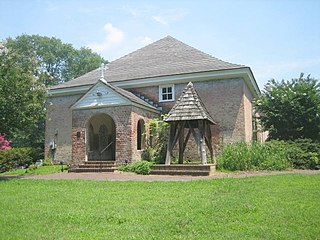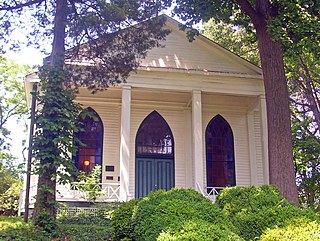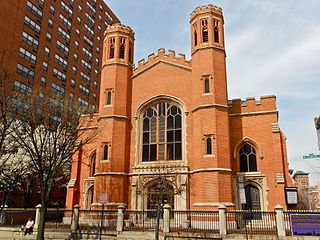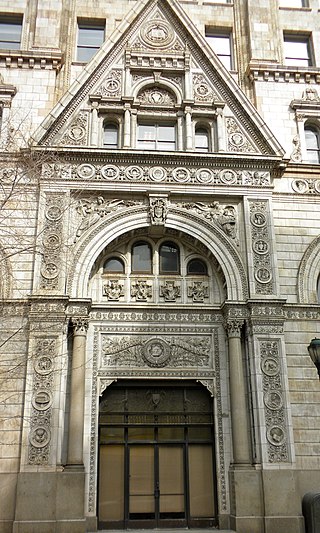
Snow Hill is a town and the county seat of Worcester County, Maryland, United States. The population was 2,103 at the 2010 census. It is part of the Salisbury, Maryland-Delaware Metropolitan Statistical Area.

John Walter Smith, was an American politician and a member of the Democratic Party in the United States, held several public offices representing the state of Maryland. From 1899 to 1900, he was a U.S. congressman for the 1st district of Maryland; from 1900 to 1904, he was the 44th Governor of Maryland; and from 1908 to 1921, he served in the U.S. Senate, first as the junior senator for Maryland, and from November 1912 as the senior senator.

Francis Makemie (1658–1708) was an Ulster Scots clergyman, considered to be the founder of Presbyterianism in the United States of America.

Ephraim King Wilson II the son of Ephraim King Wilson, was a Congressional Representative and a Senator from Maryland.
Ephraim King Wilson was a Congressional Representative for the State of Maryland.
John Rankin Franklin was a Congressional Representative for the U.S. state of Maryland. He also served as a member of the Maryland House of Delegates in 1843 and as Speaker of the Maryland House of Delegates in 1849.

St. John's Church, St. John's Episcopal Church, or St. John's Episcopal Church, Broad Creek, is a historic Episcopal church located at 9801 Livingston Road in Fort Washington, Prince George's County, Maryland. It is a rectangular Flemish bond brick structure with a bell hipped roof. The interior features a barrel vaulted ceiling with an intricate support system.

The Bethesda Meeting House is a historic Presbyterian church complex in Bethesda, Montgomery County, Maryland, US. Its name became the namesake of the entire surrounding community in the 1870s. It sits on Maryland Route 355 just inside the Capital Beltway. It has been listed on the National Register of Historic Places since 1977.

The Manokin Presbyterian Church is a historic church located in Princess Anne, Somerset County, Maryland. It is a 1+1⁄2-story brick structure with a three-story entrance tower on the east end. The walls of the main section were built in 1765, and the tower was added in 1888. It is one of the first organized Presbyterian Churches established in America. In 1672, a group of Scotch-Irish Presbyterians who had settled on the Eastern Shore of Maryland, petitioned the Grand Jury of Somerset County for a civil permit to hold services of worship and to have their own minister. The permission was granted, and Robert Maddox was called by the Grand Jury to preach on the third Sunday of each month, at the home of Christopher Nutter, 'at the head of the Manokin River,' the present site. In 1680 a request was sent by Colonel Stevens of Rehobeth to the Presbytery at Laggan, Ireland, for an ordained minister, and three years later, in answer to that request, the Reverend Francis Makemie, a 25-year-old, recently ordained minister, arrived in Somerset County. Under his leadership, this church, and those at Rehobeth, Pitts Creek, Snow Hill, and Wicomico were organized.
Beverly is a historic home located in Pocomoke City, Worcester County, Maryland, United States. It is a 2+1⁄2-story, Georgian-style Flemish bond brick house built about 1770. The house faces the Pocomoke River. An original circular ice house survives on the property.

Churchville Presbyterian Church is a historic Presbyterian church located at Churchville, Harford County, Maryland. It consists of three harmoniously designed sections: the original one-story, four by three bay, gable-roofed brick building dated to 1820; the three-story, restrained Italianate, brick bell tower added in 1870; and the low, one-story brick church hall and office added in 1950. Located adjacent is a sequestered 4.5-acre (1.8 ha) graveyard with stones dating back to 1819. The community of Churchville, which surrounds the church, grew up around and took its name from the structure.

Rehoboth Presbyterian Church is a historic Presbyterian church located at Westover, Maryland in Somerset County near the Pocomoke River and Chesapeake Bay.

Franklin Street Presbyterian Church and Parsonage is a historic Presbyterian church located at 100 West Franklin Street at Cathedral Street, northwest corner in Baltimore, Maryland, United States. The church is a rectangular Tudor Gothic building dedicated in 1847, with an addition in 1865. The front features two 60 foot flanking octagonal towers are also crenelated and have louvered belfry openings and stained glass Gothic-arched windows. The manse / parsonage at the north end has similar matching walls of brick, heavy Tudor-Gothic window hoods, and battlements atop the roof and was built in 1857.
Isaac Pursell was a Philadelphia, Pennsylvania-based architect.

Witherspoon Building is a historic office building located in the Market East neighborhood of Philadelphia, Pennsylvania. It was designed by architect Joseph M. Huston (1866–1940) and built between 1895 and 1897. It was built for the Presbyterian Board of Publications and Sabbath School Work. It is an 11-story, steel frame "E"-shaped building, faced with brick and granite. It has terra cotta decorative elements. Its exterior features Corinthian order and Ionic order columns, statues, medallions, seals of various boards and agencies of the Presbyterian Church and of related Reformed churches. It is named for John Witherspoon (1723–1794), a president of Princeton University.

Accomac Historic District is a national historic district located at Accomac, Accomack County, Virginia. The district encompasses 158 contributing buildings in the town of Accomac, mainly grouped into two periods of construction. From its founding in 1786 through the second quarter of the nineteenth century, several residential, commercial, governmental, and religious structures were built in the core of Accomac, representing both high-style and vernacular examples of late Georgian, Federal, and Greek Revival styles. Notable structures surviving from this period include the rectory of St. George's Episcopal Parish ; the Seymour House (1791-1815); Roseland (1750-1850); Seven Gables (1786-1905); Rural Hill, and the Francis Makemie Presbyterian Church (1840). The second period of construction reflected in the town dates to the last quarter of the nineteenth century, when the arrival of the New York, Philadelphia, and Norfolk Railroad spawned renewed growth and economic prosperity in Accomack County following the Civil War. These buildings also display both high-style and vernacular expressions of Victorian Era styles, including Second Empire, Italianate, Gothic Revival, and Romanesque. Notable structures from this time period include Bayly Memorial Hall, the County Clerk's Office (1887), the Accomack County Courthouse (1899), and houses found in the Lilliston Avenue extension of the town built in the 1880s-1890s. There are also contributing structures dating from the first quarter of the twentieth century, including the Drummondtown Baptist Church (1914), Drummondtown United Methodist Church (1920), and the former hotel at the town square (1925).
Makemie is a Scottish surname. It may refer to:
George Martin Upshur Jr. was an American politician and lawyer from Snow Hill, Maryland. He served in the Maryland House of Delegates and as speaker of the Maryland House of Delegates in 1888. Upshur served as mayor of Ocean City, Maryland from 1896 to 1898. He was president of the Baltimore City Board of Police Commissioners from 1900 to 1904.

Franklin Upshur was an American politician and lawyer. He served in the Maryland House of Delegates in 1924 and as state's attorney of Worcester County, Maryland from 1947 to 1951.

John P. Moore was an American politician from Maryland. He served as a member of the Maryland Senate from 1900 to 1914. He served as mayor of Snow Hill.


















